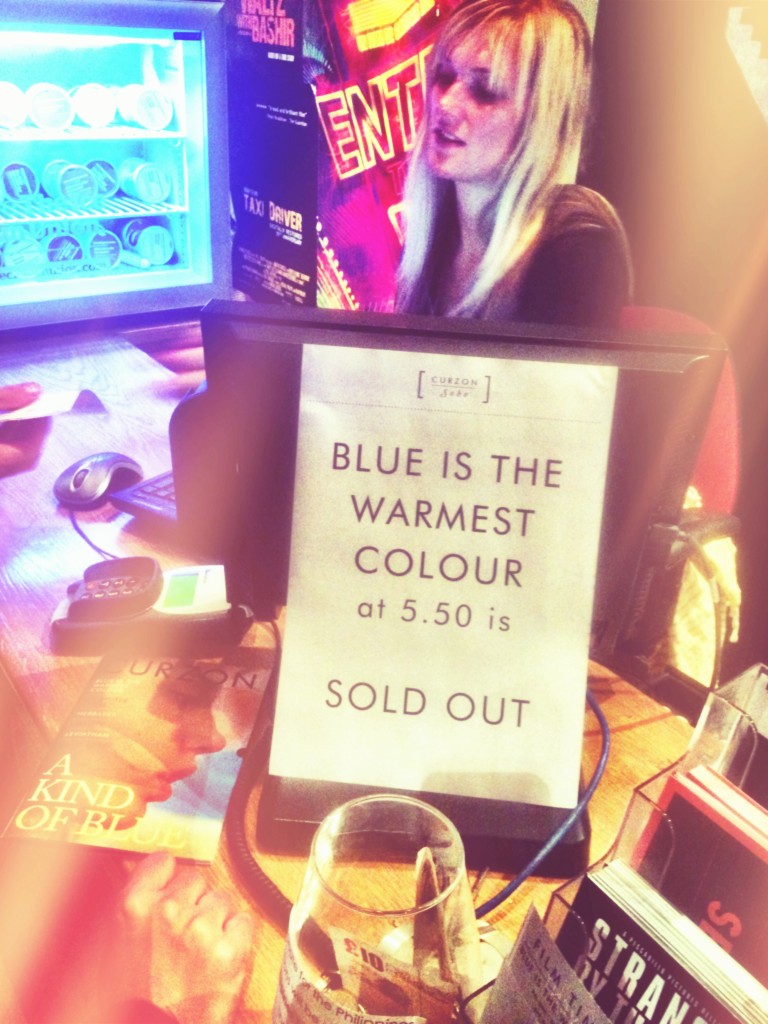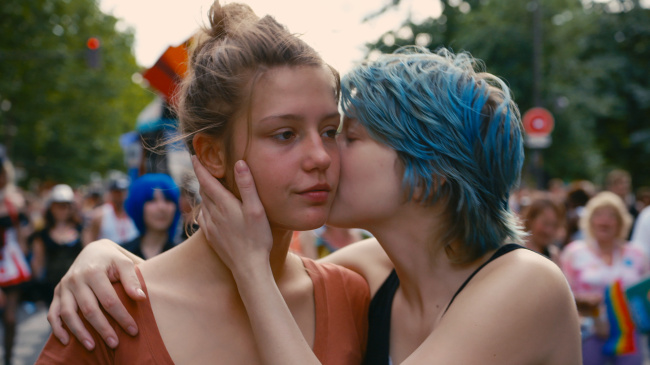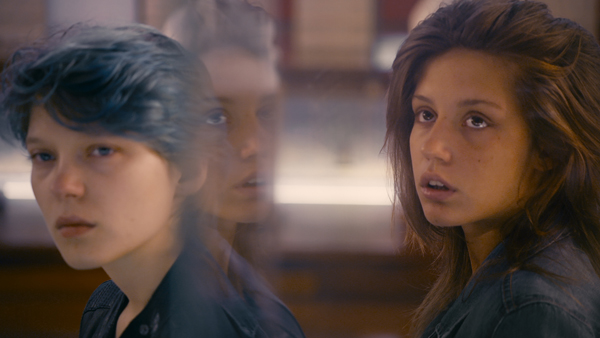There are a handful of classic films I can’t wait to re-watch, but I’m patiently waiting until our Smalls are old enough. They’re not classics in the sense of The Railway Children or It’s a Wonderful Life. No, I’d label them more as coming-of-age, must-see-growing-up films and I’d start with The Breakfast Club and end with Pretty in Pink, ensuring that St Elmo’s Fire and Flashdance were absolutely not omitted. While there is no doubt that they’d feel dated and we’d wince at the fashion, the messaging is sound and the identification strong. And Blue Is The Warmest Colour would be the most recent, absolutely contemporary yet utterly worthy, addition to my playlist. (albeit they’d need to be 18).
He and I saw it last night at the Curzon Soho. Actually, its release was perfectly timed as it’s rare that we have the opportunity to see a 550pm screening (totally necessary for a 3 hour film). But, seeing as the Smalls were playing away at Lord and Lady Y’s, we added this Cannes Film Festival applauded vision to our list of freedom-treats. And, as you can see from my snap, every seat in this 120-seater cinema was sold out. 5 women to every curious man as this cinema epic promised almost 10 minutes of passionate girl-on-girl ie every man’s dream. (more of which later).
So a few basics first. I had expected that the film would simply be a love story, between high-school student Adèle (Adèle Exarchopoulos) and a more sophisticated, middle-class artist, Emma (Léa Seydoux). And if you ask Him, he’ll agree that it was. Except that’s NOT what I saw. For me, this is a tale of an adolescent girl discovering her sexuality. Adèle’s journey (French title ‘La Vie d’Adèle—Chapitres 1 et 2’) is set in the northern French city of Lille, and this a 3-hour character study spanning several years of her exploration. Initially we see her dating a boy, we witness her vivid and passionate dreams of a blue-haired female and, on several occasions, we feel her emotion.
Her tale is not just one of woe and passion though. Adèle is a devotee to school and learning. We see her relish the pages of her French literature, so much so that she bases her career choice as a teacher to ‘give back’. And she writes, but solely for herself (she points out) as it is this journal writing which enables her to face up to her true feelings.
So a (partial) love story, a gay coming-of-age tale, a desire for education and some pretty hot steamy lesbian passion… but none of qualities won Abdellatif Kechiche this year’s Palme D’Or. No, it is, quite simply, his camera work. Kept tight and close, we feel Adèle. Not in a sexual way, but in an ‘under the skin’ connection which allows us to be almost as intimate with the two girls as they are with each other. Adèle’s lips (especially slurping her spaghetti bolognaise), her intense eyes as she first catches sight of Emma’s blue hair, the tears (of which there are plenty) and her hair. Oh don’t get me started on her hair…. I don’t think I have EVER had such hair envy as I had in this film… But – yes – the way that this French film is shot makes it the cinematic feast worthy of Steven Spielberg and his Cannes jury’s praise.
And, lastly, I’m not sure what you might want to know in advance about the infamous scene of intimacy. My male readers might want to know if it is pornographic. I suppose it is. It’s intense and long and … crucial. I, for one, felt sheer relief for Adele in her world of sexual discovery as we are only too painfully aware just how detached she had felt, until her relationship with Emma.
Last year I raved about Rust and Bone as my 2012 film of the year. This is, without doubt, my equivalent for 2013.





